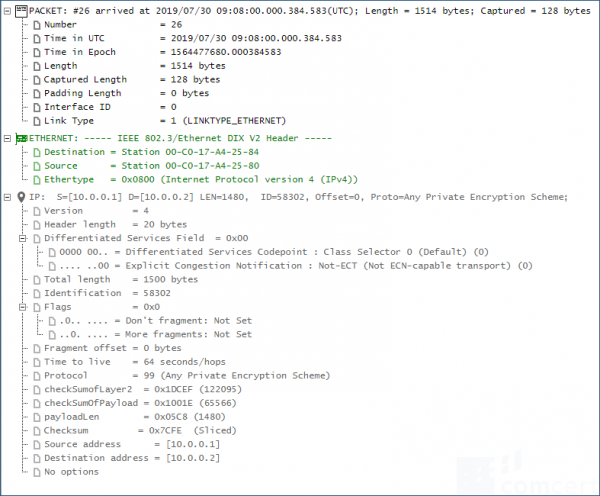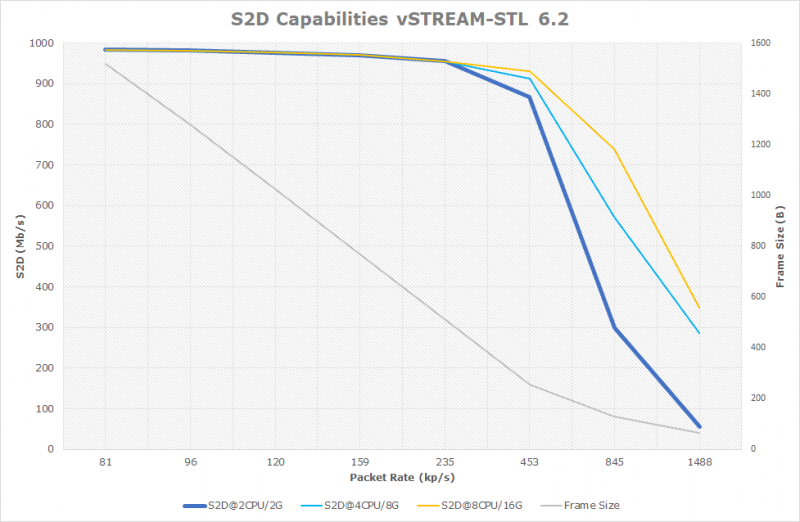vSTREAM-STL S2D Capabilities: Difference between revisions
No edit summary |
No edit summary |
||
| Line 16: | Line 16: | ||
| | ||
[[File:OPVXGTGPayloadType.png|border|center| | [[File:OPVXGTGPayloadType.png|border|center|600px|OPVXGTGPayloadType.png]] | ||
| | ||
Revision as of 06:55, 5 August 2019
Test setup
Source: OPVXG Traffic Generator
Destination: ME: CRT-VIR-A-VVSTL62:if4
vSTREAM Standalone version 6.2.0-451 on NGS 6.2.0-658 with two MON interfaces (auto tsa 50/50)
OptiView XG Traffic Generator version
vSphere: ESXi v6.7 with 300 IOS
Traffic type

Traffic measured
Graphically with Link Monitor for 60' at 5' AVG:

Conclusion
Because the unofficial default capacity of a VSphere Standard Virtual Switch (VSS) is considered to be around 250kpps, we must conclude that vSTREAM-STL Stream to Disk capabilities are hardly affected by the number of CPU and memory assigned to the virtual machine.
The 5' results show a high variation over time at 1488kpps (almost 500% of the assumed capacity of the VSS) is exeeded.
We did experience instability issues whenever the memory size was not in line with the numer of virtual CPU. You must provide 2GB of RAM per vCPU. This is also a recommendation of VMware itself.